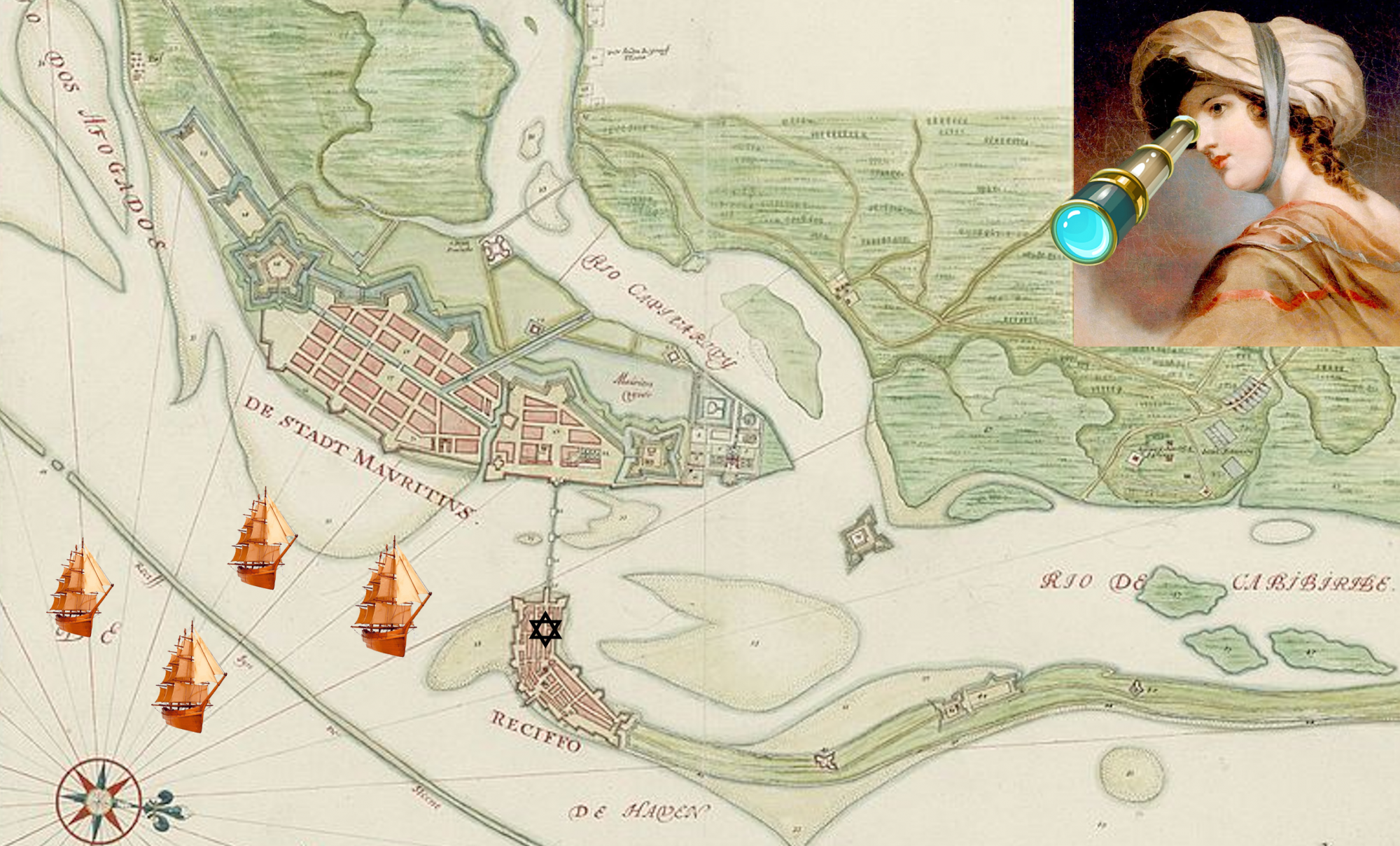
Many early American Jews either came directly from the Iberian Peninsula or had ancestors from there.
Sephardic Jews probably originally came to the Iberian Peninsula during the Roman Era, around 200 BCE. After the Roman Empire fell, the lands came under the control of Islam. From 8th to the 13th centuries CE, Muslims controlled most of Iberia. Although some Muslim leaders persecuted the Jews, others allowed them to thrive and some grew wealthy in money and learning. Great Rabbis like Maimonides were born there. Many great Spanish kabbalists wrote exquisite works of Jewish mysticism.
By 1250 Catholics had reconquered much of Iberia, but fighting between Muslims and Catholics remained fierce. Jews were no longer so safe, and were often caught between Catholics and Muslims and began to be persecuted by both. The most desperate change happened, however, in 1469 when two Catholic monarchs, Isabella and Ferdinand married and united two major parts of the Peninsula and created the Kingdom of Spain. Desperate to rid the peninsula of non-Christians, they used a court system called the Inquisition to find and eliminate Muslim and Jewish trouble makers.

Portugal is mainly on the
left of the vertical line;
Spain on the right.
The Inquisition was terrible: in 1492 in the very same month that King Ferdinand and Queen Isabella of Spain ordered Columbus to sail for the Indies, the expelled all the Jews from Spain. Only those who converted to Catholicism could stay. On July 30th, over 200,000 Sephardim chose Judaism instead and lost their homes and almost all of their possessions. Many lost their lives as they were attacked as they left. Some went to Turkey, where the Muslims Sultan welcomed the Sephardic merchants who he thought could bring his empire wealth. Others fled to nearby Portugal. Those who fled to Portugal were punished yet again four years later when King Manuel made a deal with the Spanish. This time leaving was not an option. Only eight Jews were allowed to leave, and ten of thousands others were forced to convert. Some like the chief rabbi chose death instead.
Yet even after the Jews converted the Catholics continued to punish them through a court system called the Inquisition. The Inquisition spied on the Jewish converts (conversos) to make sure they were practicing Judaism in secret. If they were, they were thrown in prison and tortured until they confessed their “sins,” real or imagined. Those who confessed, apologized, and agreed to be good Catholics were still punished, often lost all their property, and were shunned by society. Those who refused to admit their crimes or refused to give up Judaism were burnt at the stake in a public auto-da-fé (“acts of faith”) you can see in this painting by Francisco Ricci of the auto-da-fé in Madrid’s Plaza Mayor in Spain (1683), these public punishments were considered entertainment, and were as popular to attend as bull fights.


Even in the eighteenth-century, descendants of forced converts were not safe in Iberia. When she was quite old, Sarah Lopez, the daughter of Jacob Rodriguez Rivera, related the family history to her younger relative Mrs. Priscilla Lopez of Charleston. In it, she recounts why her husband Aaron Lopez’s family left Iberia:
“This genealogy I cannot trace farther back that from my husband’s father named Diego Jose Lopez, a man much respected and esteemed in Portugal where he was born and married twice. By his first wife (who was my grandfather Rivera’s sister) he had two sons and one daughter named there Jose, Michael [Miguel] and Elizabeth. Jose, the oldest son, from some unpleasant circumstances connected with the affairs of the Inquisition, supposing himself in danger of being imprisoned in that horrid place, quitted the country very young in his father’s lifetime, and went as I am informed to England, from when he was the first of his brothers that came to America, where in compliance with our religious forms and customs he changed his name to that of Moses and married my grandfather’s daughter Rebecca

The whole family afterwards removed from New York to Newport. … By the second wife of my husband’s father who was of the Lopez family, he had three sons, named in rotation Edward [Duarte], Henry, and Gabriel. Henry died quite young…[but Edward and Gabriel came to the Americas and] were called here Aaron and David. The first brother Edward [and Gabriel] came also from Portugal….The mother and two of the other daughters were killed by an earthquake in Portugal in the year 1755, the house falling upon them, and the son, a worthy young man, was murdered in cold blood in his own house by a Spanish traitor who lodged there one night as his intimate friend, so that of the whole family, only one daughter was left living in Portugal.”
Test Your Knowledge!
Activity
Based on the information above given by Sarah Rivera Lopez, draw a family tree for Aaron Lopez’s family. Include both his father’s first family and his second. If you don’t know a person’s name, just write “unknown female” or “unknown male.” You can make your tree either in the shape of a chart, an actual tree, or another shape that you like better. Be creative!
Common Sample Shapes of Family Trees
Here are some free downloadable family tree sheets
or you may want to a tree shape:


Learn More
The following people on this website were born in Iberia


